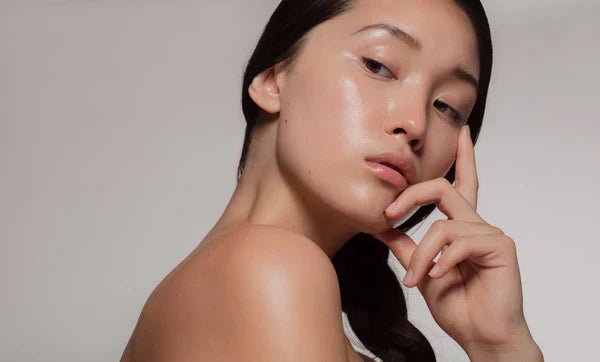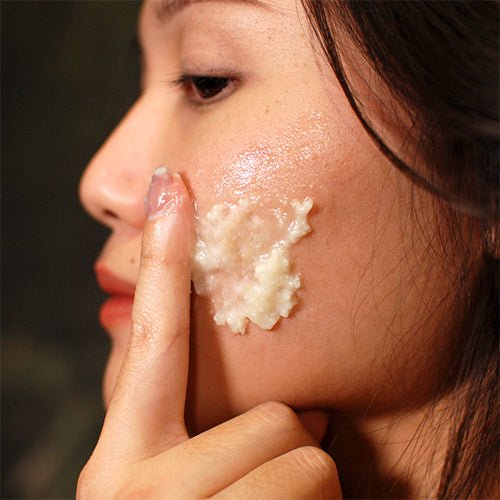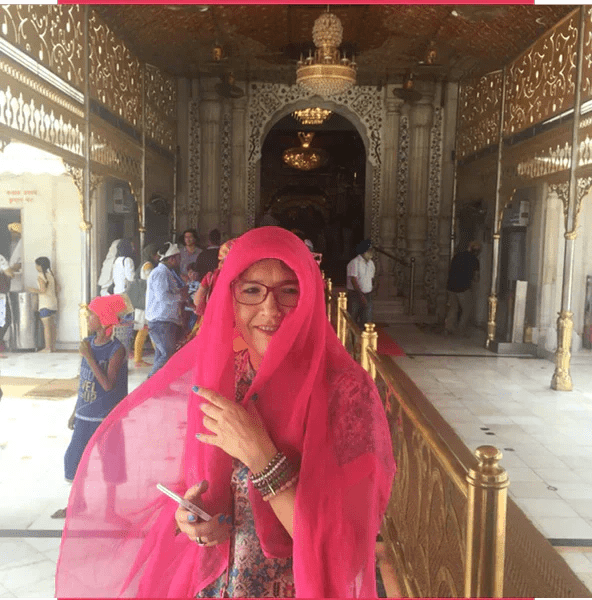Inspirations
Korean Skincare Steps – The Secret to Flawless Asian Skin
Korean skincare is one of the most extensive and effective skincare rituals in the world. Asian women learn the proper steps from a young age, applying natural cosmetics in the right order and with extraordinary care. The result? Smooth, firm, perfectly moisturized, and radiant skin—free from discoloration and imperfections. In this article, you'll discover all the steps of Korean skincare —from cleansing, essence, and serum to sheet masks and sunscreen. You'll learn why the order in which you apply your cosmetics is so important, the benefits of each step, and how to incorporate this ritual into your daily routine. Why is Korean skincare so effective? A Korean skincare ritual involves 10 to 18 steps, performed both morning and evening. It's crucial not only which cosmetics you use , but also the order in which you apply them . Each step enhances the effects of the next, allowing the active ingredients to better penetrate the skin. In Asia, beautiful skin is a symbol of health and harmony, which is why women invest time in daily skincare. European women are increasingly adopting these habits, delighted with the results – an even complexion, lack of imperfections, and a youthful glow. What are the stages of Korean skincare? Stage 1 – Oil Cleansing The first step is to remove makeup with an oil or oil balm. Oils dissolve sebum and makeup, removing them more effectively than water. Combine this step with a facial massage along the muscles to stimulate microcirculation and give the skin a healthy complexion. Check: Step 2 – Cleansing with gel or foam This is called two-step cleansing . After the oil, a water-based cleanser—a gel or foam—is used to remove residual oil, sweat, and impurities. Don't be fooled by the amount of foam—effectiveness depends not on the bubbles, but on the ingredients. Check: Stage 3 – Exfoliation of dead skin Mechanical or enzymatic exfoliation removes dead skin cells and unclogs pores. This leaves skin smoother, more radiant, and allows subsequent cosmetics to be absorbed more effectively. Use once or twice a week is sufficient. Try it out: Step 4 – Skin toning Toner restores the skin's normal, slightly acidic pH, soothes, and moisturizes. Choose natural, alcohol-free toners rich in humectants. Apply them by patting them in with your hands, without using a cotton pad. Reach for: Step 5 – Facial Essence Essence is the heart of Korean skincare. It has a light, watery consistency and a high concentration of active ingredients. It intensely moisturizes and regenerates, preparing the skin for the next steps. Use: Step 6 – Serum or ampoule Serums have a higher concentration of ingredients than essences. Choose one based on your skin's needs – moisturizing, anti-wrinkle, brightening, or regenerating. Check: Step 7 – Sheet mask These sheet masks are saturated with concentrated serum. Use them 1–2 times a week for intense hydration and nourishment. Step 8 – Eye cream The skin around the eyes is the thinnest, so it requires special care. Gently pat the cream in to avoid stretching the skin. Try: Step 9 – Moisturizing cream or overnight mask The cream locks in moisture, protects against water loss, and strengthens the skin's protective barrier. You can replace it with an overnight mask once or twice a week. Try: Step 10 – Sun protection The final step in your morning skincare routine is a cream with SPF . It protects the skin from photoaging and discoloration, as well as skin cancer. How to choose Korean skincare cosmetics? Choose natural active ingredients : plant extracts, ferments, vitamins. Avoid drying alcohol and strong detergents. Choose cosmetics according to your skin type and needs . Remember about regularity – it's the key to results. Frequently Asked Questions - People Also Ask - Korean Skincare Steps 1. General Questions About Korean Skincare 1. What is Korean skincare and where does it come from? Korean skincare is a multi-step skincare ritual originating in South Korea. It involves 10–18 steps, using natural Korean cosmetics in a specific order. The goal is to achieve smooth, moisturized, and radiant skin. 2. How many steps does a Korean skincare ritual have? The traditional Korean skincare ritual involves 10 steps, although some versions may have more – up to 18. Each step serves a different purpose: from cleansing to sun protection. 3. Why is the order of cosmetic application important in Korean skincare? In Korean skincare, cosmetics are applied from the lightest to the thickest to allow active ingredients to penetrate deep into the skin. Changing the order can limit the effectiveness of the entire ritual. 4. Does Korean skincare work on all skin types? Yes. Korean skincare routines can be adapted to suit dry, oily, combination, sensitive, or acne-prone skin by selecting appropriate cosmetic formulas. 5. What are the most important rules of Korean facial care? The basis is regularity, thorough cleansing (two steps), layered moisturizing, using SPF filters and avoiding irritating ingredients such as drying alcohol. 2. Step-by-step questions 6. How to start Korean skincare? The first step is an oil cleanser to dissolve makeup and sebum. Then, a water-based gel or foam is used to remove any remaining oil and impurities. 7. What is two-step facial cleansing? This is a distinctive Korean skincare method in which the skin is cleansed first with oil and then with a water-based cleanser. This leaves the complexion perfectly clean and prepared for subsequent steps. 8. How to properly use makeup removal oil in Korean skincare? Apply the oil to dry skin, massaging it along the facial muscles. Then rinse with lukewarm water and use a foam or gel. 9. What is the difference between essence and serum in the Korean ritual? The essence has a lighter consistency, intensely moisturizes and prepares the skin, while the serum is more concentrated and targets a specific problem, such as discoloration or wrinkles. 10. How often should you use peeling in Korean skincare? Peeling is performed 1-2 times a week to remove dead skin cells and increase the absorption of active ingredients. 11. Why is toner so important in Korean skincare? Toner restores the skin's proper pH after cleansing, moisturizes, and prepares it for subsequent steps. This is an essential step in the Korean ritual. 12. How often should you use sheet masks? Sheet masks are used 1–2 times a week or more often, depending on the skin's needs. They provide intense hydration and nourishment. 3. Questions about ingredients and effects 13. What ingredients are popular in Korean cosmetics? Korean cosmetics often contain ferments, plant extracts (e.g. green tea, ginseng, aloe), hyaluronic acid, ceramides, and niacinamide. 14. Why do Asian women care so much about sun protection? SPF protection prevents photoaging, discoloration, and skin cancer. In Korea, it's a daily habit, regardless of the weather. 15. What natural extracts can be found in Korean essences and serums? Popular extracts include ginseng, green tea, centella asiatica (CICA), bamboo, rice and lotus flower extracts. 16. Do Korean cosmetics contain mineral or chemical filters? You'll find both mineral filters (zinc oxide, titanium dioxide) and chemical filters (including Uvinul A Plus, Tinosorb). They're often combined for greater protection. 17. What ingredients in Korean cosmetics have anti-wrinkle properties? Retinol, peptides, ceramides, and antioxidants such as vitamin C are some of the key anti-aging ingredients. 4. Practical tips and effects 18. How long does it take to do a full Korean skincare routine? The full 10-step ritual takes an average of 15–25 minutes, depending on the number of additional masks or facial massages. 19. Is it possible to shorten Korean skincare to a few steps? Yes, you can do so-called "skinimalism" – limiting it to the key steps: cleansing, toner, serum, moisturizer, and SPF. 20. How to choose Korean cosmetics for dry, oily and combination skin? Dry skin needs cosmetics with hyaluronic acid and vegetable oils, oily skin needs light, oil-free formulas, and combination skin needs products that regulate sebum and moisturize at the same time. 21. How long does it take to see the effects of Korean skincare? The first results, such as improved hydration and smoothing, are visible after a few days. It takes 4–8 weeks of regular care to even out skin tone and reduce wrinkles. 22. Can Korean skincare help with discoloration? Yes, especially thanks to cosmetics with vitamin C, niacinamide and AHA acids, which brighten the skin and even out its tone. 23. How to combine Korean skincare with European cosmetics? They can be combined, maintaining the principle of application from the lightest to the thickest formulas. It's important not to mix strong acids with retinol in the same step. Summary The Korean skincare routine is a carefully planned ritual, with each step crucial. Incorporating it into your daily routine can transform the appearance of your skin—it will become smooth, radiant, and vibrant. Choose high-quality cosmetics, preferably natural, and apply them in the correct order. Your skin will thank you for it.
Learn moreNatural Cosmetics
What are natural cosmetics? Natural cosmetics are nothing more than cosmetics in which the ingredients are of natural origin. What does this mean? Natural cosmetics do not have their own legal definition, natural products should have a declared percentage of naturalness above 90%. The remaining 10% are ingredients that do not have their natural equivalents, and are necessary to produce the cosmetic and maintain its properties and microbiological purity. Natural cosmetics may contain preservatives that are strictly defined, ingredients that naturally occur e.g. in fruits - e.g. benzoic acid, sorbic acid, benzyl alcohol, dehydroacetic acid. Why are natural cosmetics better than conventional ones? Natural cosmetics are based on natural extracts, hydrolates and oils. We obtain from nature what is best and most effective. Based on active ingredients, we create effective care. Thanks to this, the entire cosmetic has unique properties. The base of a conventional cream in most cases is a synthetic water-fat mixture to which about 5% of active ingredients are added. What are the properties of natural cosmetics? Cosmetics based on natural ingredients have a huge number of properties. In nature, there are countless mushrooms, herbs, fruits, rhizomes, seeds and minerals. It is not difficult to find those that contain the right vitamins, amino acids or fatty acids. Thanks to modern technologies, we are able to extract the most valuable ingredients on the basis of which we can create a unique recipe. Combining the right ingredients allows you to achieve a brightening , anti-wrinkle , sebaceous gland regulating, anti-acne , smoothing or any other effect you choose. The possibilities are endless, just like natural raw materials. Natural cosmetics are environmentally friendly Natural cosmetics are products that create a zero-waste trend, they use recycled plastic and glass. Thanks to this, waste creation is reduced, and many of them gain a new life and are reused. We replace plastic with glass, reduce the amount of foil, and ecologically pack orders. We are close to nature, and we also spread awareness among society. Why is it worth investing in natural cosmetics? Truly natural cosmetics, which are rich in high-quality plant active ingredients, are distinguished by their effectiveness. Unfortunately, in the natural category, we increasingly find products that are natural only in name. They contain natural ingredients with a high degree of processing, which causes them to lose their original properties and are chemically changed. That is why it is extremely important to check the labels and not just be guided by the ecological appearance of the packaging. Unfortunately, the phenomenon of greenwashing, advertising conventional cosmetics as natural or ecological, is becoming increasingly popular.
Learn moreHOW ORIENTANA CAME TO BE
Did you know that Orientana is a Polish brand? Although these are natural cosmetics made from Asian plants, they are created by a Polish woman. A Polish woman in love with Asia and a natural lifestyle. The creation of Orientana was preceded by several important facts in my life: A few years ago, I focused on nature. I switched my whole family to a healthy diet and a healthy lifestyle. I gave up processed food, started teaching my children to read labels and live ecologically. The reason for this change was, among other things, my visits to Asian countries, where people live close to nature and greatly appreciate its value. I visited many Asian countries where I learned about natural medicine, Ayurveda and amazing plants, whose beneficial effects have been known in those regions for thousands of years. I also learned about cosmetics with natural, simple compositions, the formulas of which are different from European ones. I decided to combine my passion for natural cosmetics and Asia with work. This is how Orientana was created - natural cosmetics made from Asian plants. The best specialists and Ayurvedic doctors in India and scientists from Poland who specialize in natural formulas work for Orientana. I create cosmetic concepts, and they transform them into a natural product. Without compromise, always with the best natural composition, as innovative and unique as possible. I want my brand to stand out among cosmetics with its full naturalness, high quality and Asian ingredients. I want it to be available and enjoyable for every Polish woman. I hope you will love Orientan as much as I do.
Learn moreJAPANESE NEW YEAR - SHōGATSU
In Japan, New Year (Shōgatsu) is the most important holiday, celebrated according to the Gregorian calendar. Characteristic features include the ringing of temple bells, sending New Year's cards, and giving money to children in small envelopes. JAPANESE NEW YEAR - TRADITIONS New Year in Japan is a magical time, full of unique customs and traditions that distinguish it from celebrations in other parts of the world. The Japanese attach great importance to preparations for this holiday, which is expressed in special care for the home and its surroundings. One of the most characteristic elements of these preparations is decorating homes with kadomatsu, traditional decorations made of bamboo and pine, placed at the entrance to the home, which are supposed to protect against evil and impurities. The purification of the living and spiritual space is key in Japanese preparations for the New Year. The custom known as ōsōji, or great cleaning, includes not only physical cleanliness, but also mental cleanliness. It is a time to tidy up not only the home, but also your thoughts and life, to pay off debts or pay overdue bills. The tradition of the kamidana, or Shinto home altar, is equally important. It is decorated with fresh sakaki tree leaves and shimenawa rope, which is supposed to symbolically separate the sacred from the profane. The offering of kagami mochi, round rice cakes that symbolize the three sacred treasures of Japan, is part of this tradition. JAPANESE NEW YEAR - NEW YEAR'S EVE IN JAPAN New Year's Eve in Japan is primarily a family celebration. During the ceremonial dinner, dishes with symbolic meaning appear, such as soba noodles, symbolizing long life, or kagami mochi. A meal of osechi ryōri, containing black beans, shrimp, and herring roe, is supposed to bring abundance and prosperity to the home. At exactly midnight, bells ring in Japanese temples. You can hear 108 strikes, which symbolize the 108 sins of man or human worries. Nengajō, or New Year's postcards, are an important part of holiday traditions. They are sent to family, friends, and coworkers to emphasize the importance of relationships and mutual respect. Hatsumōde, or the first shrine visit of the New Year, is a key moment of celebration. It is a time for offerings and prayers to ensure good fortune for the coming year. Finally, the Emperor's New Year's Address is an important event where the Japanese monarch extends his best wishes to his subjects. It is an opportunity to reflect on the past year and hope for the future. During this special time, we cannot forget about otoshidama, traditional cash gifts for children to ensure good luck and prosperity in the coming year. New Year in Japan is a unique holiday that combines tradition with modernity, spirituality with everyday life, showing the unique character of Japanese culture.
Learn more





